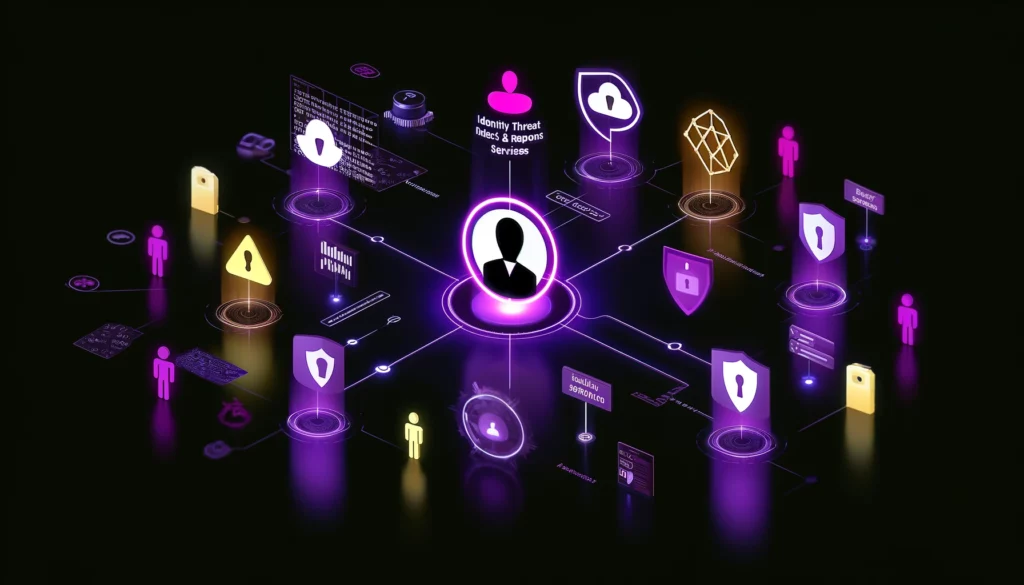With the growing prevalence of credential-based cyberattacks, protecting digital identities has become a critical priority for businesses. It’s far easier for attackers to exploit credentials, such as passwords, than to breach highly fortified systems. For organizations, safeguarding and monitoring access within their Identity and Access Management (IAM) frameworks has never been more essential. This article dives into the implementation of Identity Threat Detection and Response (ITDR) systems, offering a unified approach to prevention, detection, and response, and taking cybersecurity beyond just prevention methodologies.
Why is Identity Threat Detection Crucial?
User credentials, such as usernames and passwords, are among the most frequent targets for cyber attackers. They often provide direct access to critical systems and sensitive data, making them one of the biggest vulnerabilities in modern security landscapes. Reports show that many data breaches originate from stolen, compromised, or misused credentials, making credential security a pressing challenge.
IAM, or Identity and Access Management, is the framework businesses use to control and secure access to resources. Traditionally, IAM has focused on preventive measures like multi-factor authentication (MFA) and role-based access control (RBAC). While these methods are essential, they fail to address the gaps around detecting and responding to credential misuse. This is where ITDR systems step in to bridge the gap, combining IAM with Security Information and Event Management (SIEM) systems for a holistic security approach.
What Are ITDR Systems?
Identity Threat Detection and Response (ITDR) systems are cybersecurity platforms that combine identity management and security monitoring to tackle credential-related risks. Unlike traditional preventive tools, ITDR delivers robust measures for threat detection and response. ITDR systems operate across three key phases:
- Collect
- Detect
- Respond
The Collection Phase
The foundation of ITDR systems begins with precise data collection. These systems gather valuable insights from various sources, including:
- Identity Providers (IDPs): These platforms are responsible for user authentication processes and often enable Single Sign-On (SSO) capabilities. They provide key insights into user behavior, such as access patterns and failed authentication attempts.
- Directories: Directories store vital information, such as usernames, hashed passwords, and user roles. Common examples include systems utilizing Lightweight Directory Access Protocol (LDAP) or Microsoft Active Directory.
- Network Flow Data: Capturing network activity provides additional context to log files. Unlike logs that could be tempered with, network flow data ensures added visibility across organizational traffic.
- Firewall and Security Logs: These logs track access attempts to sensitive resources, helping identify possible intrusions or unauthorized access attempts.
- SIEM Systems: Security Information and Event Management systems aggregate and analyze security data from multiple sources, providing comprehensive insights into security events.
By consolidating data from these sources, ITDR systems offer a centralized and holistic view of identity activity across an enterprise, enabling organizations to monitor patterns and detect anomalies effectively. These insights are often presented through customizable dashboards, providing actionable intelligence about risky behaviors and suspicious accounts.
The Detection Phase
ITDR systems excel at detecting anomalies and identifying patterns that traditional tools might overlook. Unlike traditional SIEM tools that focus on events that did happen (e.g., a login attempt), ITDR systems can recognize activities that should have happened but didn’t. For example:
- A user logs in but skips the expected MFA step.
- An internal user accesses sensitive applications without proper authentication.
ITDR systems employ advanced techniques, such as state diagrams, to map expected workflows and identify deviations. For instance:
- Internal users should access general applications after appropriate authentication.
- External users should log in via a VPN (Virtual Private Network), complete MFA, and then access sensitive applications.
Deviations from these expected workflows raise red flags and trigger alerts for further investigation.
The Response Phase
When ITDR systems detect a threat, they immediately initiate response actions to minimize damage and prevent escalation. Common response actions include:
- Account Lockouts: Temporarily suspending accounts to prevent further unauthorized use.
- Access Privilege Adjustments: Restricting privileges based on suspicious activity, following the principle of least privilege.
- Incident Reporting: Logging incidents and notifying security teams with actionable insights and recommendations for resolution.
By integrating ITDR systems with broader SIEM platforms, organizations enable real-time communication between systems, enhancing the effectiveness of both detection and response.
What Can ITDR Systems Detect?
Identity Threat Detection and Response systems identify complex and subtle threats that traditional tools often miss. For example:
- Weak Authentication Loopholes: Spotting users bypassing MFA or using outdated authentication methods.
- Risky Privileged Access: Detecting unauthorized attempts to access high-privilege accounts like admin or root accounts.
- Anomalous Access Patterns: Identifying unusual user behavior, such as repeated access from external IPs or attempts to access applications unrelated to a user’s role.
The Benefits of ITDR Systems
Adding ITDR systems to a cybersecurity strategy offers significant advantages, including:
- Enhanced Identity Protection: By monitoring user activity across multiple sources, ITDR systems minimize the risk of credential misuse and insider threats.
- Improved Detection of Advanced Threats: ITDR addresses the gaps in traditional IAM tools by providing greater visibility into sophisticated attack strategies, such as lateral movement or advanced phishing attacks.
- Efficient Incident Response: Automated responses enable organizations to react to threats swiftly, reducing the time taken to contain and neutralize breaches.
Key Considerations for Implementing ITDR
To maximize the benefits of ITDR, businesses should consider:
- System Compatibility: Ensure the ITDR platform integrates seamlessly with existing IAM, security, and IT infrastructure.
- Employee Training: Equip IT teams with the knowledge to interpret ITDR outputs and respond effectively.
- Ongoing Monitoring and Upgrades: Regularly update ITDR systems to stay ahead of evolving threats and maintain optimal performance.
The Future of ITDR Systems
With attackers adopting increasingly sophisticated credential-based strategies, the future of ITDR will involve more advanced technologies like AI-powered threat analytics. These systems will predict potential vulnerabilities using historical data and automate responses with greater precision. ITDR solutions are expected to evolve beyond detection and response, offering predictive capabilities as part of their core functionality.





